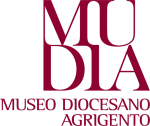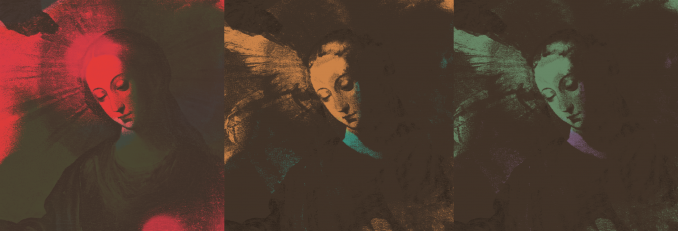Art and Neuroscience
- I See what You Feel-
when the past connects to contemporaneity
The site-specific installment for the never-before-seen painting “The Martyrdom of Saints Cosma and Damiano in the boiling cauldron” by Pietro D’Asaro, the “Racalmuto’s Monocle”, sponsored by Mudia – Museo Diocesano di Agrigento, was conceptualized and curated by Anastasia De Marco in a joint effort with Maria Grazia di Palermo, PhD and expert in neuroesthetics and PAD – Palermo Art District & Consulting s.r.l.
In our technological present we look at the future with concern and we reflect on the meaning of the person in the present.
It is essential to ask ourselves how the past can still talk to the people living in the third millennium and then teach the difference between good and evil, between wisdom and foolishness, between light and darkness.
The history of the planetary thought, the past, and the search for meaning inhabit the halls of a museum where various proofs of our existence cohabit and exist.
The artists of the past speak to us through their works and the museum allows us to communicate with these extraordinary people. To communicate with the genius.
In this communication lies the collaboration between the museum and neuroscience, because the comprehension of a work of art happens through the visual and cognitive apparatus but also goes through the mirror neurons, essential for the phenomenon of seeing one’s self in what we see or touch.
The reconstruction of the hypotethical study of Pietro D’Asaro is meant to foster this identification and to strengthen the perception of the moment where, through vision, one feels within themself the sensations and the psychological pressures the work conveys.
That is the whole point of this installment, the search for light and memories crystallised in elements that tell us something ordinary in an extraordinary context, where the sense of time and perception of space starts to slip away.
This architecture aims to create a dialogue between what we know as past and what we feel as present, just as it tries to fill the gap between the museum’s space and everyday’s experience.
Pietro D’Asaro, “Racalmuto’s Monocle”, interacts with today’s audience becoming a work of art himself.
Neuroscience opens a window on the world of perception, but instead of tricking the eye it shows what the mind could be subject to, opening new horizons and asking new questions.
The goal is to incite in the audience questions and emotions that allow them to interact with artists of the past, and the crucial part that makes the work whole is the participation of the viewer.
The real experiment is to test how the the past can influence our present life, debunking the notion of “past” itself and proving the perpetuity of interpersonal communication.
This perpetuity rises above contingence and shows us a hidden truth, the divine reality of mankind’s creation who, as an expression of God, has some of His traits in it, just like the aforementioned perpetual existence, although a virtual one.
Anastasia De Marco
Maria Grazia Di Palermo

